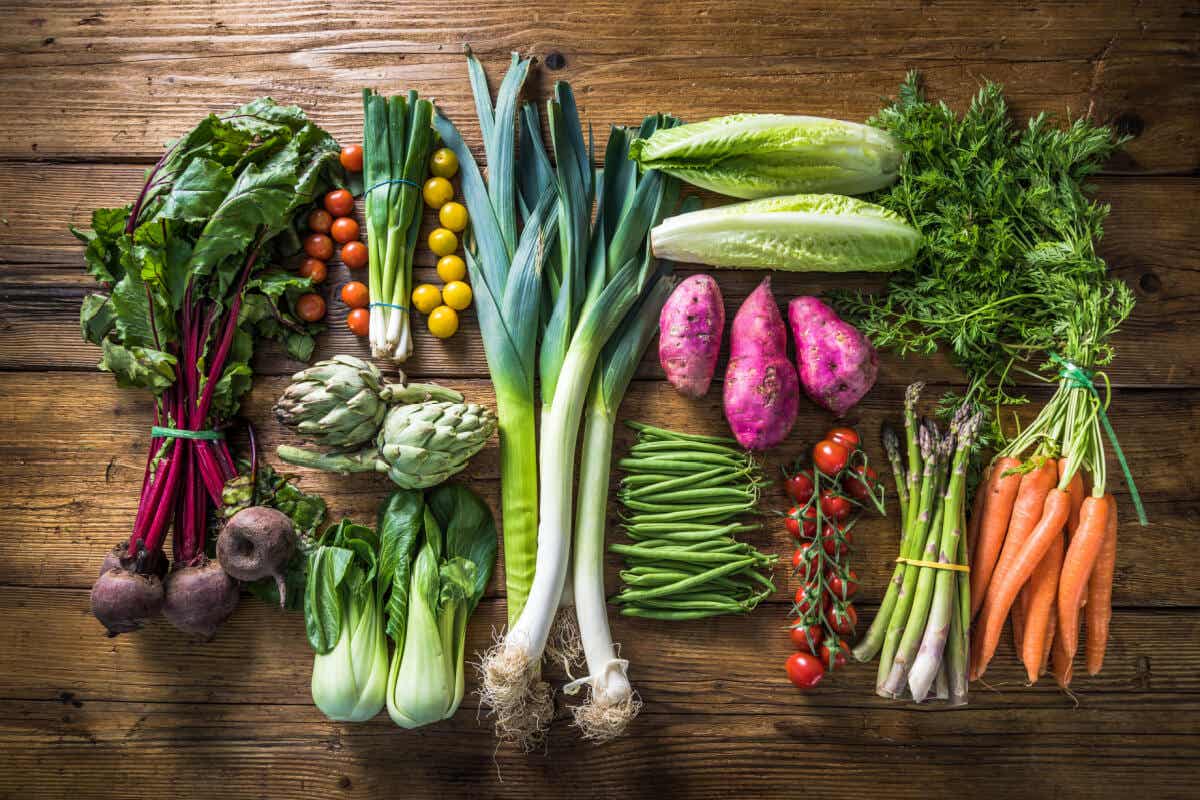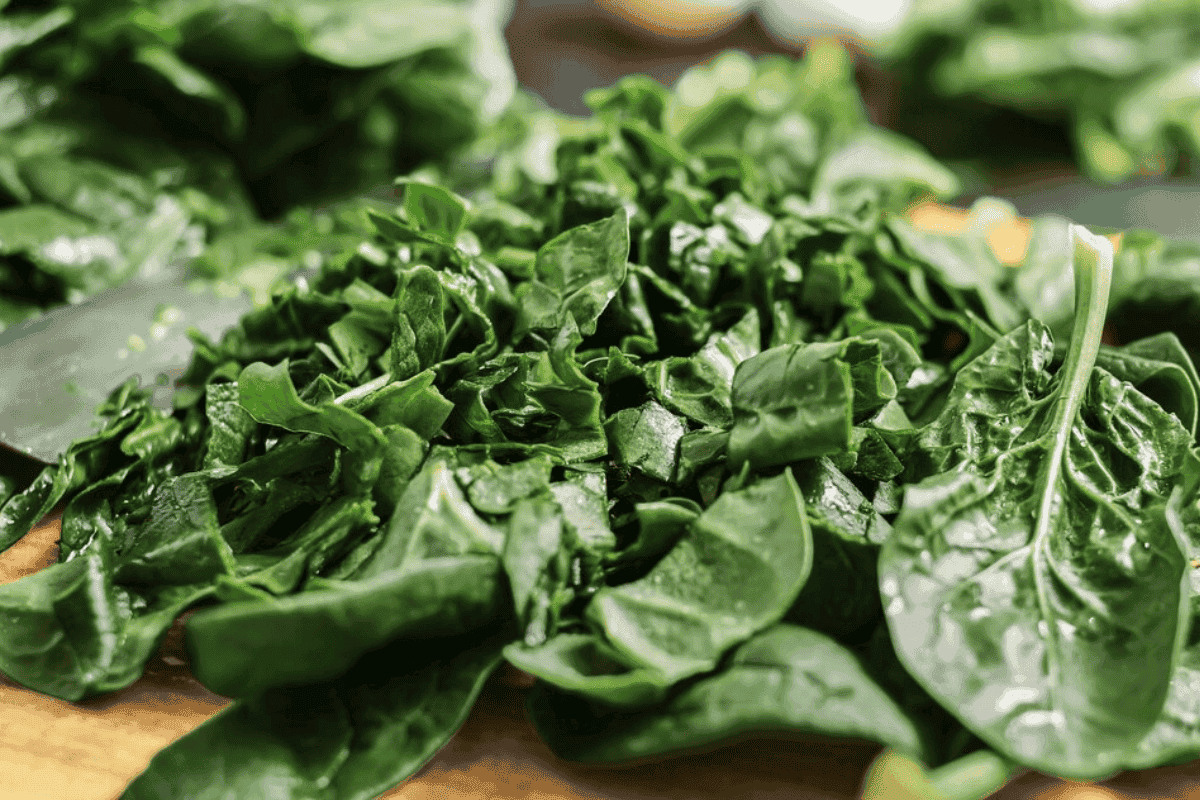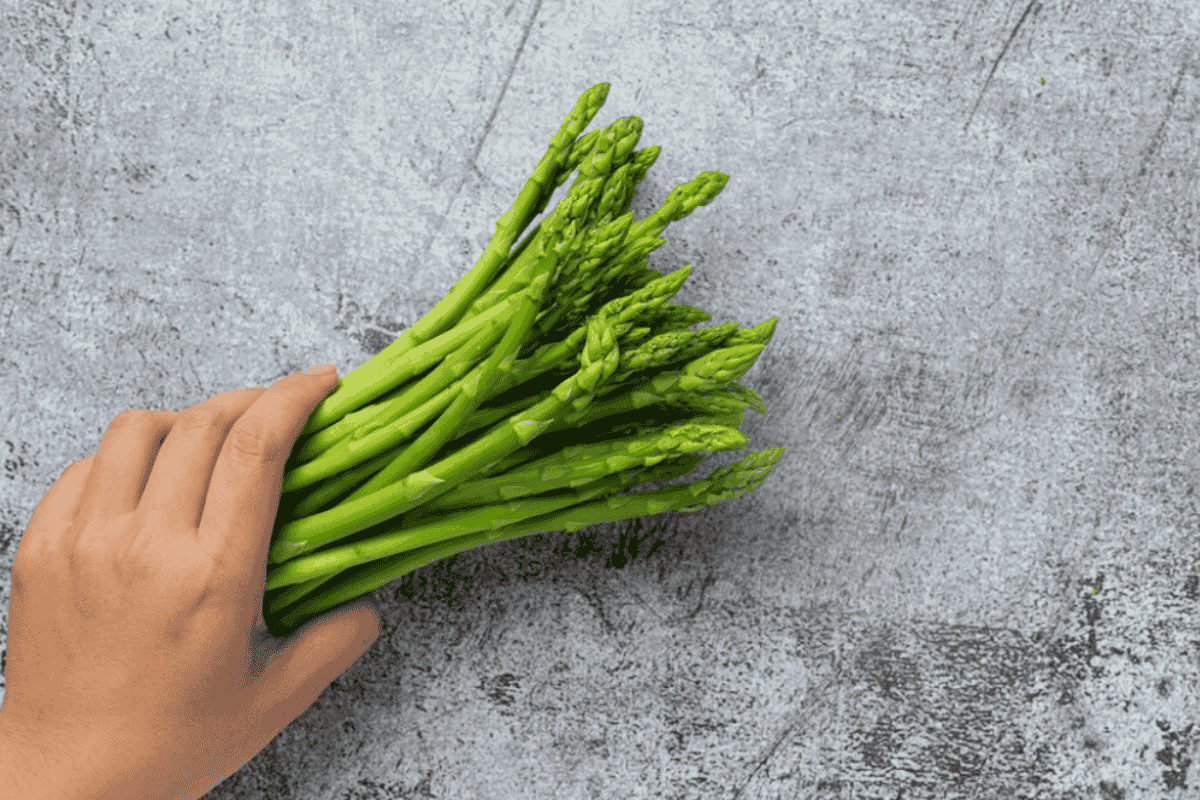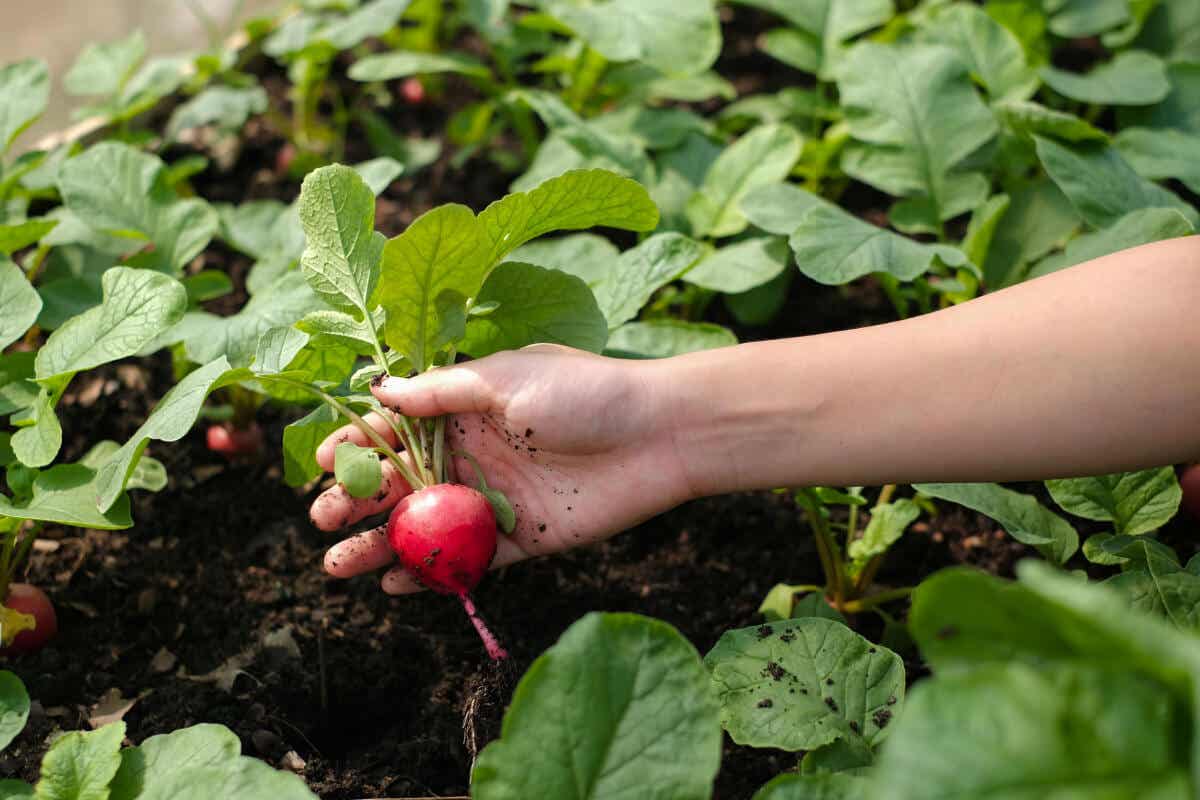Winter vegetables are recognized for their nutritional quality. Many of them help you improve digestion and protect your heart health. Read on to find out what they are and how you can include them in your diet.
The change of seasons involves not only updating our wardrobe, but also adjusting our eating habits and changing the weekly menu. In this period, We are provided with exciting opportunities to create exquisite dishes using vegetables. In winter.
In this article we will talk about foods that you can consume in the coldest season of the year: versatile, tasty, very nutritious and with high vitamin content, to take care of your health. So, if you want to know which vegetables to include in your diet, don’t stop reading.
Most notable winter vegetables
According to the World Health Organization (WHO), It is advisable to eat at least 400 grams or five servings of vegetables a day and get enough fiber, to reduce the risk of chronic diseases such as type 2 diabetes, cancer or obesity. In this sense, there are some of the things that are most recommended to be consumed in winter, thanks to their large vitamin content and which we explain in detail below:
1. Chard
Chard has large green leaves and stems that can be white, red or yellow. It has a distinctive taste, which is usually Smooth with a light touch of bitterness, It is an excellent choice to include in a balanced diet, as it provides a variety of essential nutrients such as:
- Vitamins A, K and some of group B (such as B6 and folic acid).
- Essential minerals like calcium, iron, magnesium and potassium.
- It is rich in dietary fiber, as it improves digestive health; and antioxidants like lutein and zeaxanthin, which help vision.
This winter vegetable can be found from December to March and you can consume it in salads, stewed or sautéed.
2. Spinach
It has dark green leaves and mild flavor. You can find it in different versions: with smooth and curly leaves. It is a great source of essential minerals like iron, calcium, potassium, magnesium and manganese. Besides:
- It is low in calories and rich in nutrients.
- It contains vitamins A, B, K, C, minerals and antioxidants.
- It is rich in dietary fiber, as it helps control cholesterol.
- It contains high levels of folic acid, making it beneficial for pregnant women and nervous system health.
You can find it in the months of January to March. To include spinach in your diet you can do it through lasagna with pesto and cheese, smoothies and stir-fries.
3. Turnip
Turnips are round bulbs with white, purple or yellow skin. Its texture is crispy and its taste is slightly spicy and sweet. It is more common to use it raw for salads., Because this way it is better protected Nutritional properties. some of them are:
- Rich in dietary fiber and water, it will help in digestion.
- Source of potassium, magnesium, phosphorus, manganese and zinc.
- High content of Vitamin C, which improves your immune system.
- They contain antioxidant compounds, such as glucosinolates, which are linked to health benefits and disease prevention.
It is more common to find turnips in the months of January and March. In recipes you can prepare them in salads, steaming, roasting, boiling or in stews and soups.
4. Carrot
Versatility and nutritional contribution have transformed carrots One of the most popular choices for a healthy diet, You can find orange, purple, yellow and white carrots depending on their variety. It tastes sweet and when cooked, its texture is usually soft. Its health benefits include the following:
- It contains antioxidants like beta-carotene, which help deal with oxidative stress.
- High content of Vitamin A, B and C for eye, immunity and coagulation health.
- Good source of minerals such as potassium, manganese and phosphorus, contributing to electrolyte balance and bone health.
The ideal season for finding carrots is from January to March. dare to prepare delicious This vegetable is added to dishes such as salads, snacks and even Smoothies
5. Cauliflower
It is one of the most popular winter vegetables in healthy cooking, especially in the months of December to March. Cauliflower is white, purple or green depending on the type. If you eat it raw it’s crunchy, but It becomes soft when cooked, And it is highly sought after in the healthy world, due to the number of preparations in which you can find it that includes it and its nutrients. Among its most important properties are:
- High levels of vitamins C and K, as well as vitamin B6, which helps brain function.
- It contains fiber, minerals, and antioxidants like sulforaphane, which are linked to anti-cancer properties.
- Besides, it is also low in carbohydrates. For this reason, you can eat it cooked, prepare pureed dishes and even include it as a base for pizza and rice.
6. Asparagus
They are green, long and crunchy. These winter vegetables are not only delicious, but they are also a nutritious source of vitamins, minerals, and antioxidants.
- Great source of folic acid (vitamin B9), important for DNA formation and cell growth.
- They provide minerals such as potassium, phosphorus and manganese, which are essential for various metabolic functions.
- Asparagus has natural diuretic properties, which means it can help remove excess fluid from the body.
They are more common to find in the months of February and March. Regarding its preparation, Mohd. You can prepare them in a variety of ways: steamed, roasted, grilled, roasted, in salads, in creams or raw.
7. Radish
If you are looking for how to give a more delicious and colorful touch to your salads, radishes are what you need. They are generally round bulbs ranging in color from red to white and even black. passed A spicy, slightly bitter taste and its texture is crisp and juicy, Besides being delicious, they also contain many vitamins:
- High content of Vitamin C and folic acid.
- Due to its high water content, radish can also contribute to hydration.
- High fiber content, which improves intestinal transit; and minerals such as potassium and manganese.
This vegetable is found most in December and January. You can add it to countless recipes and prepare it in a variety of ways: salads, pickles, steamed, roasted or used as a garnish in various dishes.
8. Celery
Do you like strong flavored vegetables? Celery is light or dark green in color, known for its long, fibrous, crunchy stalks. It tastes bitter, but it depends on how you prepare it; Furthermore, its leaves are also edible and are widely used for flavoring and aromatizing foods. In addition, it also has excellent nutritional properties such as:
- Rich in fiber.
- Helps control blood sugar.
- Compounds such as apigenin, which have been shown to have anti-inflammatory properties.
- The high water content, which provides volume without calories, is ideal for creating a feeling of satiety.
- Provides minerals such as potassium and small amounts of calcium, phosphorus and magnesium essential for heart health
the best? You can prepare and eat it in different ways throughout the winter.: Include celery in your diet in sauces or with juices and smoothies.
9. Beetroot
It is an excellent option to add a sweet touch to balance your meal. It is known for its distinctive dark red color and round shape. It can be eaten raw or cooked and its leaves are also edible. Beets are rich in nutrients like:
- Vitamin C, folic acid and fiber.
- Natural nitrates, which when consumed, can be converted into nitric oxide in the body, which may have benefits for heart health.
The best time to find it in abundance is the months of February and March. To include beetroot in your preparations you can roast, boil or pickle them. To control cholesterol, you can also eat it by adding it to smoothie.
10. Leek
This winter vegetable is dark green from above and white from below. The white part is most commonly used in cooking, while the green part can be used to flavor broths. Despite being in the onion family, it has a more subtle flavor.
- Leek extract has been found to have anti-inflammatory properties.
- It is known to contain allyl sulfides, which may be beneficial for heart health.
It’s very easy to find throughout the winter and delicious prepared in creams, stews, stir-fries or leek pie recipes.
11. Broccoli
Quick to prepare and very versatile. That’s broccoli. The flowers have a crisp texture when raw and become soft when cooked. You can also eat the stem, which becomes soft when cooked.
- It contains high amounts of antioxidants like lutein and zeaxanthin.
- It is also an important source of dietary fiber, which supports digestive health. CContributes to the feeling of satiety.
- It contains minerals like potassium, calcium, phosphorus, magnesium and iron. In addition, vitamins such as C, K and folic acid (vitamin B9), riboflavin (B2), niacin (B3), vitamin B6 and vitamin A.
December, January and February are the highest production months for broccoli. You can make delicious recipes like broccoli omelette from this vegetable. You can also consume it by steaming, frying or roasting it.
12. Endive
It is usually light green from outside and yellowish white from inside. Its taste is slightly bitter and it is consumed mainly Salad, Roasted, Roasted or Steamed, It is a highly desired option due to its nutritional quality.
- It contains vitamins A, K, C and some group B.
- It is rich in essential minerals such as potassium, and also contains small amounts of calcium, phosphorus and magnesium.
- Additionally, endive’s bitter taste is due to beneficial compounds such as lactucin, which has been linked to calming and sedative properties.
13. Broad Beans
These winter vegetables grow inside green beans. When harvested young they have a soft, buttery texture and become firmer as they mature. Therefore, in some cases, You must remove the outer skin before cooking., Due to its sweet taste and nutritious properties, it is a highly recommended food for:
- Source of complex carbohydrates, which provide energy for a long time.
- Rich in minerals like iron, zinc, manganese, phosphorus, magnesium and potassium.
- They contain vegetable protein, making them a valuable food for vegetarian and vegan diets.
A good way to consume beans is by roasting them, adding them to stews, roasting them or adding them raw to salads. You can also consume it in vegetarian dishes.
Winter vegetable diet for the whole year
Winter vegetables not only add vitality and flavor to our food in the cold season They provide a nutritious and versatile source that we must take advantage of to maintain a balanced diet.Throughout the year.
Many of these are found in other stations, so We encourage you to try different recipes, To provide nutrients that support your health and contribute to your well-being.
You may be interested…







